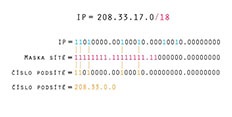IP address
An IP address (Internet Protocol address) is a numerical identifier used to identify and locate devices connected to the Internet or other computer networks that use the Internet Protocol to communicate. IP addresses are used to uniquely identify specific devices in the network and enable them to communicate with each other.

There are two main types of IP addresses:
IPv4 (Internet Protocol version 4): This is an older and still very commonly used type of IP address. IPv4 addresses are represented by a series of four decimal numbers separated by periods (for example, 192.168.0.1). There are a limited number of available IPv4 addresses, which led to the introduction of the newer IPv6 standard.
IPv6 (Internet Protocol version 6): IPv6 was developed due to exhaustion of available IPv4 addresses. IPv6 addresses are much longer and more complex, often represented by alphanumeric characters and colon blocks (for example, 2001:0db8:85a3:0000:0000:8a2e:0370:7334). This standard provides a huge number of potential addresses.
IP addresses enable the routing of data through the Internet and the identification of devices that communicate with it. Each device connected to the Internet or network has its own unique IP address, which enables the correct delivery of data to its destination. In addition, there are public IP addresses that are visible on the Internet and private IP addresses that are used inside private networks such as home networks or corporate intranets.






















































































































































